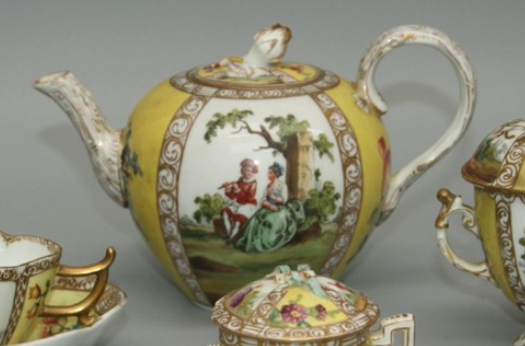
How often do you read a story online and notice grammatical errors. Be it in the news or elsewhere. Mistakes can be easily made. At least they are unlikely to be costly to yourself. But in the case of the problems auction salesrooms encounter; particularly in the provinces not necessarily London or other major cities a grammatical error in a description can be very costly.
Most often it is not the senior cataloguer who makes the mistake. More so because it is very time consuming to write up catalogues correctly where many specialists will be doing their best to give thought to the best description for the lots they specialise in.
So in order to alleviate their work load the job is given to junior cataloguers. It is they who might unwittingly make mistakes in the description.
Recently I heard the case of an assistant to a specialist undertaking the job for their senior. By the time the error was discovered the catalogue had already been printed.
One of the reasons I had an article in last weeks ATG was in the hope that I would receive questions from professionals who were learning. Instead it has been private collectors eager to learn about a particular piece that has got in touch. Nevertheless I wait in hope that cataloguers when they are unsure whether a piece is genuine Meissen will have a look at my blog at worst. At best make contact with “The Meissen Man”.
I shall be posting in the future images of items that in my opinion are not Meissen and I shall do this at least once a week until everyone gets the message; if in doubt contact The Meissen Man who will do his best to help.
This week while there were not so many errors The Meissen Man found one or two incorrectly described. Here they are:
The first is a figural group of a lady standing a cherub at her feet. Look at the marks in the images by her side. Meissen never painted crossed swords in this manner. Most likely the figure is a Samson copy.
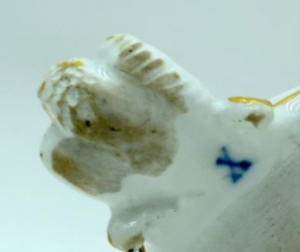
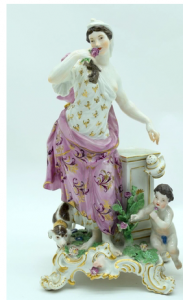
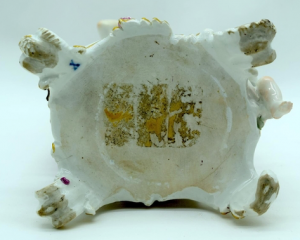
How anyone no matter their lack of understanding could call this group Meissen has quite frankly shocked me. The Meissen factory would no doubt be appalled to think that anyone could compare this very modern bad taste machine manufactured group as a figure and then call it Meissen. The blue painted mark hardly resembles a crossed swords.
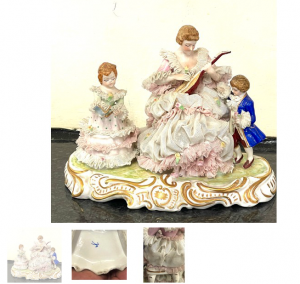
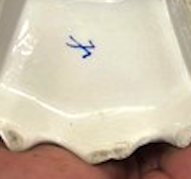 Looking at the blue imitation crossed swords marks this looks more like two letter L’s one in reverse. You will never find an authentic crossed swords painted in this manner.
Looking at the blue imitation crossed swords marks this looks more like two letter L’s one in reverse. You will never find an authentic crossed swords painted in this manner.
The following is described as ‘Meissen A 19th century Meissen bullet-form teapot, painted with reserves of courting couples and floral sprigs on a lemon and ivory ground, 11cm together with other Argustus Rex-type porcelain including a chocolate cup and cover and two cabinet cups and saucers’.
There is the error of the name Argustus that should be spelt Augustus, But to say it is Argustus rex type porcelain is misleading since authentic Augustus Rex would have been made around 150 years prior to these pieces being manufactured.
I often see auction salesrooms catalogue this decoration as either Meissen or Augustus Rex. However, most likely while the maker of any pieces with an authentic crossed swords mark will be authentic Meissen, this is to say that the porcelain was made in the factory. But when porcelain is first fired it is generally in the white and then other colours are added on top. However the Meissen Management were very much in need of increasing their income and sold off many of white service wares to other smaller Dresden porcelain painters who took the authentic Meissen and painted with their own designs.
One such person who is very well known is the retailer Helena Wolfson. Had this lot in question been described as being painted by Helena Wolfson after the style of earlier pieces made circa 1730 (one hundred and fifty years earlier) then this attribution would be a far more apt description. But calling it Meissen is clearly in The Meissen Man’s opinion misleading.


